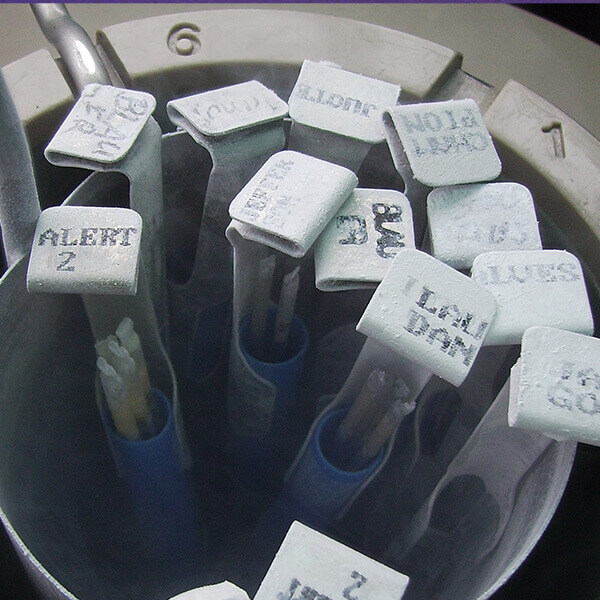Fertility preservation

There are many reasons to have an embryo or sperm frozen, the most common being health reasons.
You can be sure that the latest methods of cryopreservation of cells and tissues are so gentle that they can be thawed and used for fertilization even after decades of storage in cryobanks.
When to think about cryopreservation?
- Cryopreservation is appropriate due to medical complications such as upcoming oncological treatment
- If you are considering postponing starting a family until a later age (30+), or your current life situation does not allow you to have a child. The quality of sperm, i.e. their number and mobility, decreases with increasing age and complications may arise when trying to bring the partner to a different state.
- If you have a risky job that negatively affects your health or there is a risk of serious injuryPreserving sperm at an earlier age is one method to increase your chances of starting a family at the right time regardless of advancing age and other factors.The basis for cryopreservation is the examination of sperm – spermiogram. The task of this examination is to determine whether the sperm are in a thread and suitable for freezing.



Vitrification / Cryopreservation
A more modern cryopreservation technique is vitrification during which reproductive cells (sperm and embryos) are rapidly cooled to -196 °C (-320 degrees Fahrenheit) – in a matter seconds. This method of freezing uses media that contains high doses of cryoprotective substances that protect cells from damage.
Vitrification allows reproductive cells to be preserved in an unchanged form for later use for many years. But despite all our efforts and modern methods, not all embryos after the thawing process are suitable for implantation.
Spermiogram
The aim of the spermiogram is to determine the number, mobility and quality of sperm in the ejaculate. Based on the results of this examination, the doctor determines the next course of treatment.
The client should undergo this examination at the very beginning of the treatment.
It is a laboratory examination of the ejaculate, during which two components of the properties are evaluated:
Macroscopic
- liquefaction
- appearance
- viscosity
- volume
- pH
Microscopic
- the total number of all sperm
- total number of motile sperm (motility)
- sperm appearance (morphology)
- sperm clumps (agglutination)
- other admixture – white blood cells (leukocytes), red blood cells (erythrocytes), epithelial cells, crystals, etc.
The basic prerequisite for a spermiogram is the provision of an ejaculate sample. The sample is collected in a special collection room at our clinic. Your partner may also be present in the room during the sample collection – for the greater convenience of the client. The results are then explained by the embryologist.
Before the examination, it is recommended to:
- to have at least 2-3 days of sexual (ejaculation) abstinence
- be 14 days without a cold or other infection that requires treatment with antibiotics and other drugs
Current limits for a normal sperm count are:
- quantity – over 15 million sperm per milliliter
- ejaculate volume – at least 1.5 ml
- morphology – 4% normal sperm shape
- total mobility – 40%
- progressive mobility – 32%
- proportion of live sperm – 58%
